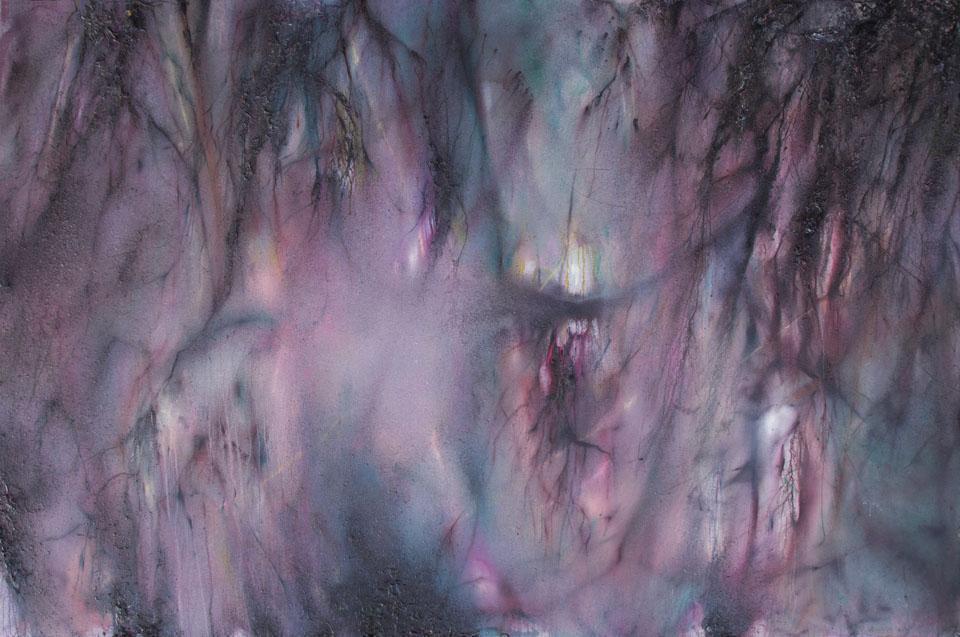Paweł Matyszewski
Hallucinations
Paweł Matyszewski
Hallucinations, 2015, canvas, mixed technique (acrylic, hair, soil, resin), 212 × 320 cm
Collection II of the Arsenal Gallery in Białystok. Work purchased by the Arsenal Gallery

Contact with Paweł Matyszewski’s works in painting encourages their reading in the categories of borderlines. In terms of representations, these are borderlines between dreams and reality, the body of the human being and the organism of a plant; in formal terms, between abstraction and figuration. Motifs painted by the artist evoke various associations, bringing to mind the images of roots, tendrils, seaweed, branching blood vessels, membranes or muscles. Matyszewski’s canvases are spatial, full of depth; they resemble images recorded by the cameras of probes reaching into the human body. They are enveloped in a distinctive pinkish-blue glow, a body-coloured mist from which emerge bands of black, blue and red. Associations with the plant world and the human body are perfectly justified; Matyszewski explores these two areas, looking below the surface, and his visions seem to derive as much from microscopic images as from hallucinations.
Matyszewski declares that the processes of development and growth are less interesting to him than the issues of transience, destruction and decay of human and vegetal organisms. The vision shaped by Matyszewski is catastrophic and dystopian by nature. In one of the interviews, the artist admitted that “digging in topics connected with death” is close to his heart. He does not show anything literally, balancing on the edge in terms of both form and contents. Outlines of organs are transformed into amorphous shapes, the captured life of cells pulsates in agonizing silence, the veins, muscles and membranes intertwine like convoluted stems, and the image itself is open to the viewer’s interpretations.
Matyszewski’s sensual works are distinguished by their excellent painterly workshop. A convincing presentation of a vision that is close to hallucinations results from a familiarity with the medium that is worthy of a craftsman. Matyszewski most often uses acrylic paints, although he is not averse to encrusting the surface of the canvas with elements that are hardly painterly, such as his own hair, sand or soil. He skilfully controls patches of dirt, impurities, passages from hue to hue, thereby suggesting that what we see is no more than the epidermis of his image. He is perfectly aware of matter and he knows how to render it through texture and colour. Also, he is intimately familiar with the cycle of vegetation and decay; he is, after all, not only a painter, but also a gardener.
Izabela Kopania
translated from Polish by Klaudyna Michałowicz

PLAN YOUR VISIT
Opening times:
Thuesday – Sunday
10:00-18:00
Last admission
to exhibition is at:
17.30